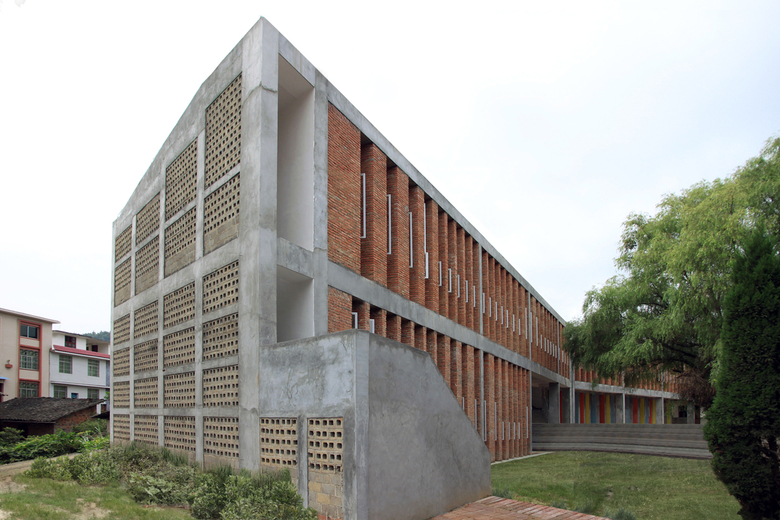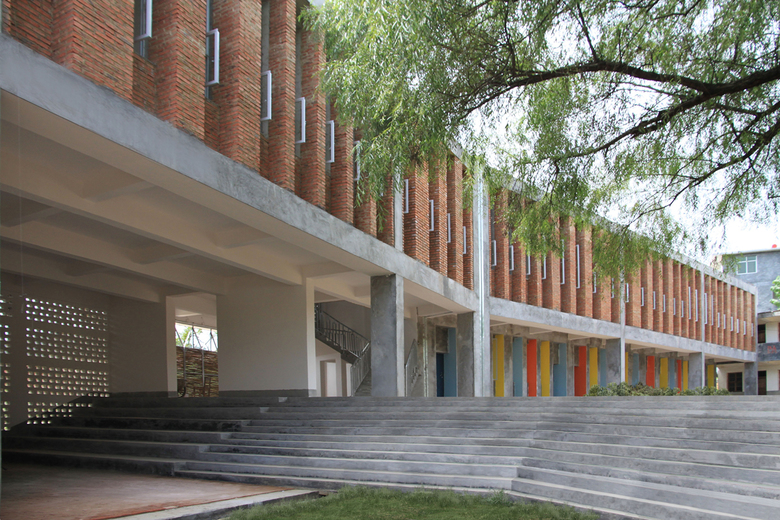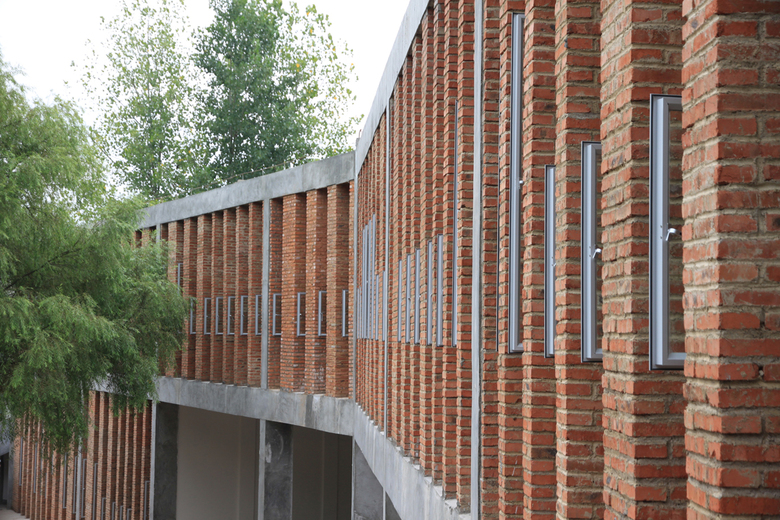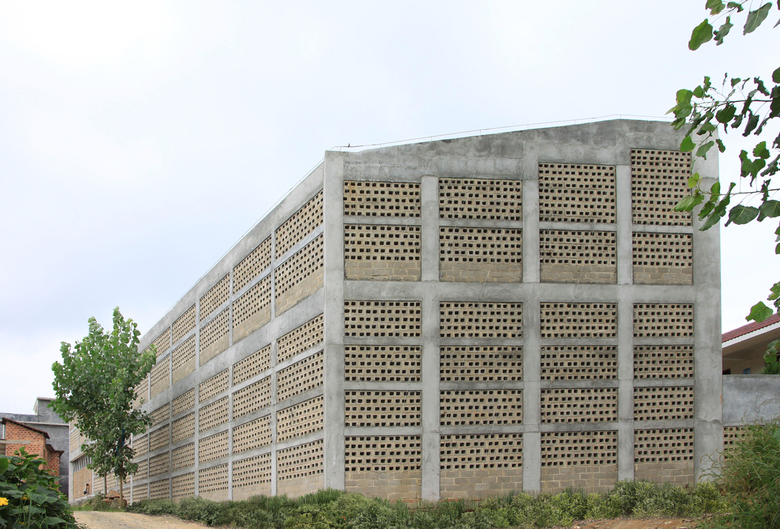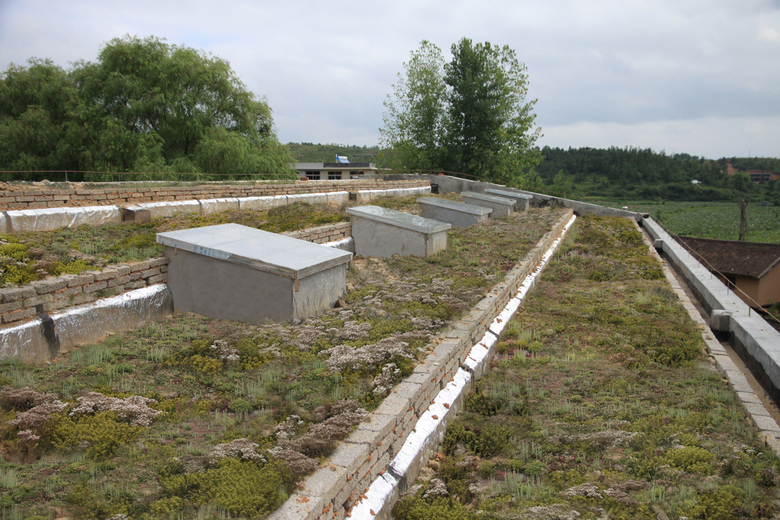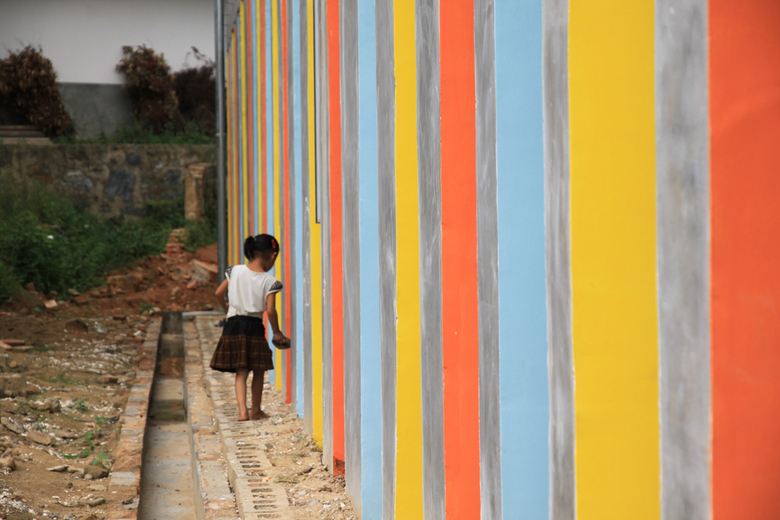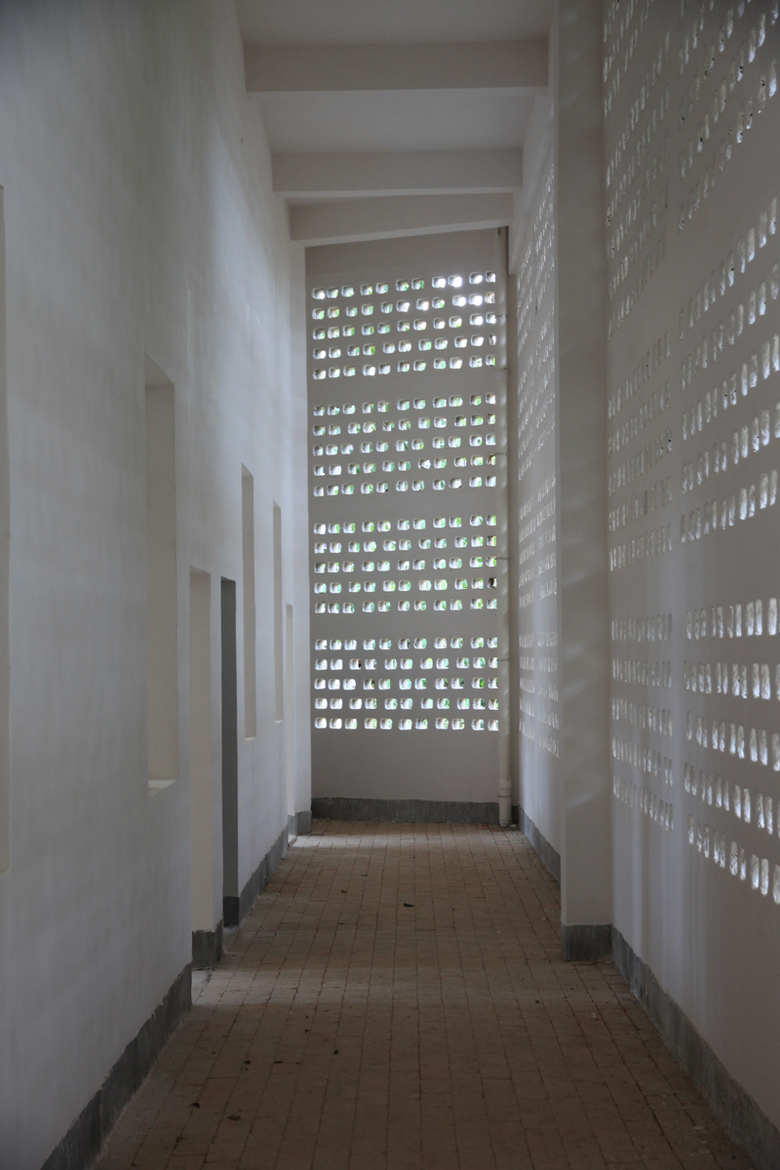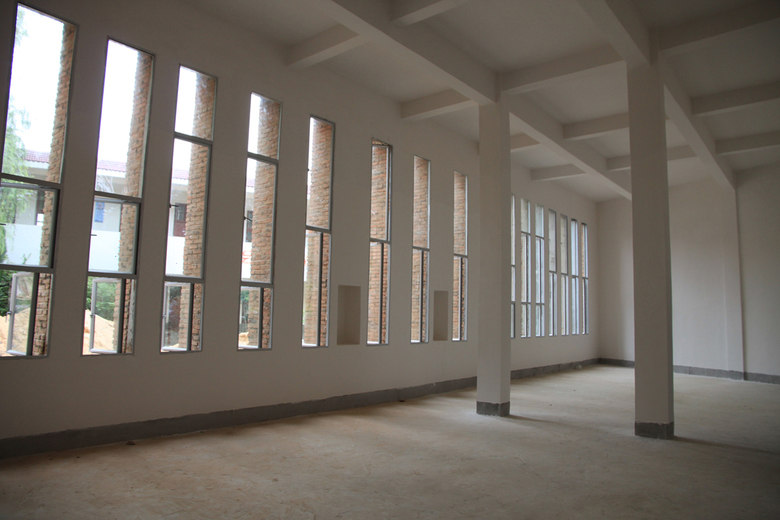Tongjiang Recycled Brick School
Jianxi Province
- Architecten
- Rural Urban Framework
- Jaar
- 2012
DESIGNERS:
Joshua Bolchover / RUFWORK/ The University of Hong Kong
John Lin / RUFWORK/ The University of Hong Kong
CONTACT:
[email protected]
[email protected]
www.rufwork.org
COMMISSIONING DONOR:
World Vision
ADDITIONAL DONORS:
Luke Him Sau Charitable Trust
CREDITS:
Design: Joshua Bolchover / RUFWORK/ The University of Hong Kong, John Lin / RUFWORK/ The University of Hong Kong
Project manager: Maggie Ma
Project team: Christiane Lange; Jess Lumley; Mariane Quadros de Souza; Anna Wan
IMAGE CREDITS:
RUF WORK
PROJECT DETAILS:
Date: April 2012
Size: 1,096m2
Cost: 73,616 USD
PROJECT DESCRIPTION:
Tongjiang Primary School is located in Jianxi Province, south-east China. The charity World Vision commissioned Joshua Bolchover and John Lin at The University of Hong Kong, Faculty of Architecture, to design a new school building at no additional cost to a typical school building found in China. These buildings are generic two story buildings with open balconies constructed from reinforced concrete and brick infill. Our aim was to work within these constraints to produce a building that responded to the site context and could create unique spatial experiences for learning and social interaction.
The brief was to expand an existing school from 220 children to 450 through the creation of a new building with 11 classrooms to provide a learning hub for a network of rural villages that currently do not have access to education. The school is situated in a rural village of approximately 5000 farmers growing crops of lotus seed and tobacco with yearly incomes of about 1700RMB, ($260 US). Although we are not aware of the exact government plans for the area, it is possible that the village could be subsumed within China’s national drive to urbanise many rural areas, through infrastructure building and factory development, in order to alleviate rural poverty. Around the village there are indicators of this potential change: government planning regulations enforce that all buildings are set back from the road’s edge; old houses are being replaced by new modernized concrete dwellings; and stacks of old materials of brick and tiles line the roadside.
The intention is to make use of these waste materials in the construction of the new school through re-deploying this material in innovative ways. The roof is formed from recycled brick waste and rubble that thickens the roof to provide additional thermal mass cooling the building in summer and retaining heat during the winter. The rubble acts as a substrate for natural greening from wind-blown plants, mosses and lichens. The roof steps down to join the wall which gradually becomes more open through perforations in the brick patterning. This external skin protects the internal classrooms from excessive solar gain yet allows for natural ventilation through the teaching spaces. The wall and roof form a thickened edge to the street façade allowing the more protected façade to the courtyard to be opened up comprising concrete fins and vertical glazing. The fins vary in size for different functions: thin strips for solar protection and wider C-sections that contain bookshelves within the classrooms.
A key concept is to allow the school to open up for community use and participation. The natural topography of the site is manipulated to create a series of outdoor steps that stretch from the main entrance across the building and through to the courtyard beyond. This creates a protected open air meeting room that is directly accessible from the street. The level change advantageously produces a large assembly hall at ground level that also functions as a community learning space or library.
Through an emphasis on the potential of waste material, simple environmental strategies and the creation of a diversity of learning spaces, both indoor and outdoor, the school is robust and adaptable enough to withstand the potential transformation in the surrounding context.
LIST OF PRINCIPLE MATERIALS USED:
Concrete, bricks, recycled bricks
Gerelateerde projecten
Magazine
-
Saving the Century and Consumers Buildings
4 days ago
-
This Week in Lawsuits
4 days ago
-
Ando's MPavilion Extended a Full Year
5 days ago
